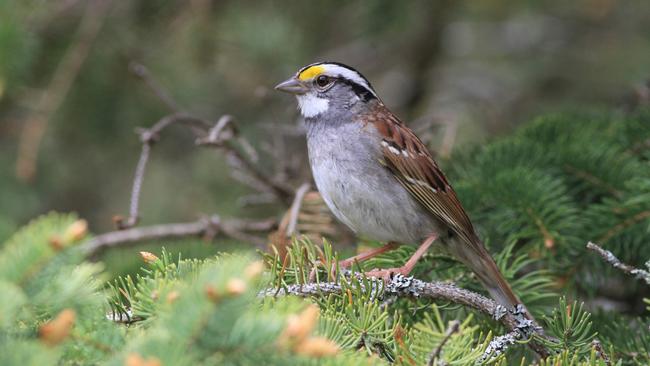Sparrows catch an earworm and change their tune
Scientists have tracked over 290 years a new song from niche tune to hit through the white-throated sparrows of Canada.

Sometimes, a song sweeps the nation. One day, everyone is singing the same boring melody, the next it seems like the whole country has changed its tune. Such is the world of sparrows.
Scientists have tracked a new song through the white-throated sparrows of Canada. They have shown how over 20 years it went from being a niche tune, sung only by a few west coast hipster sparrows, to a mainstream hit.
“As far as we know, it’s unprecedented,” said Ken Otter from the University of Northern British Columbia. “We don’t know of any other study that has ever seen this sort of spread through cultural evolution of a song type.”
The work offers insights into how the birds live and think and a window into their “culture”, showing the ways in which they transfer knowledge. The song spread too fast to be learnt by parents passing it on to offspring. It must have been “catchy” — a tune that sparrows heard and wanted to copy.
It is not uncommon for birds to switch tunes as the males compete for a mate. Often this means pockets of regional “dialect” emerge where a variation on a melody gains prominence. The latest study is the first to document a continent-wide switch, however. It was first spotted near the end of the 1990s when Professor Otter, a biologist, moved to Northern British Columbia and noticed that the sparrows had a different song.
“They were singing something atypical from what was the classic white-throated sparrow song across eastern Canada,” he said.
“I originally thought they were a peripheral population, a new song with an odd dialect.”
However, he went on a drive and found the song spread as far as the Rockies. He had expected to hear a melody which began “da-da-da” then ended with speedy triplets: “dum-dee-dum, dum-dee-dum”. Instead of triplets though, there were doublets: “dur-dur, dur-dur, dur-dur.”
Over the years, he used databases of recordings to track the spread of the doublets as they became the dominant song west of the Rockies. In the past decade he also saw them conquer the Atlantic side of Canada.
“Originally, we measured the dialect boundaries in 2004 and it stopped about halfway through Alberta,” he said. “By 2014, every bird we recorded in Alberta was singing this western dialect and we started to see it Ontario, which is 3000km from us.”
After tagging the sparrows and tracing their route, he believes the two separate populations learn it from each other at their migration sites to the south.
Why would one catchy song supplant the previously dominant sparrow call? As with any tune that gets stuck in your head, the secret to this remains enigmatic. In most bird species there is a pressure towards conservatism.
When a male bird sings, it is essentially an elaborate call for someone to mate with him. “They use song to say, ‘this is my spot, it’s occupied’. Then it is used by females to say, ‘there’s a male there, I’ll mate with him’. I equate it to guys screaming ‘get off my lawn’, and females finding that attractive,” Professor Otter said.
Biologists generally assume the bird that can best imitate the local style is the one most likely to impress females. In these sparrows, Professor Otter suggests, the opposite may be true.
“There must be an underlying bias towards novelty,” he said.
There is a corollary of this — it means that today’s fresh ditty is tomorrow’s boring dirge. “About five years ago, a new variation appeared. We were like, ‘that’s really interesting’. The next year more birds were singing it. The doublet was the novel song, it spread across Canada. It’s been here 20 years. Maybe it’s passe.”
The Times


